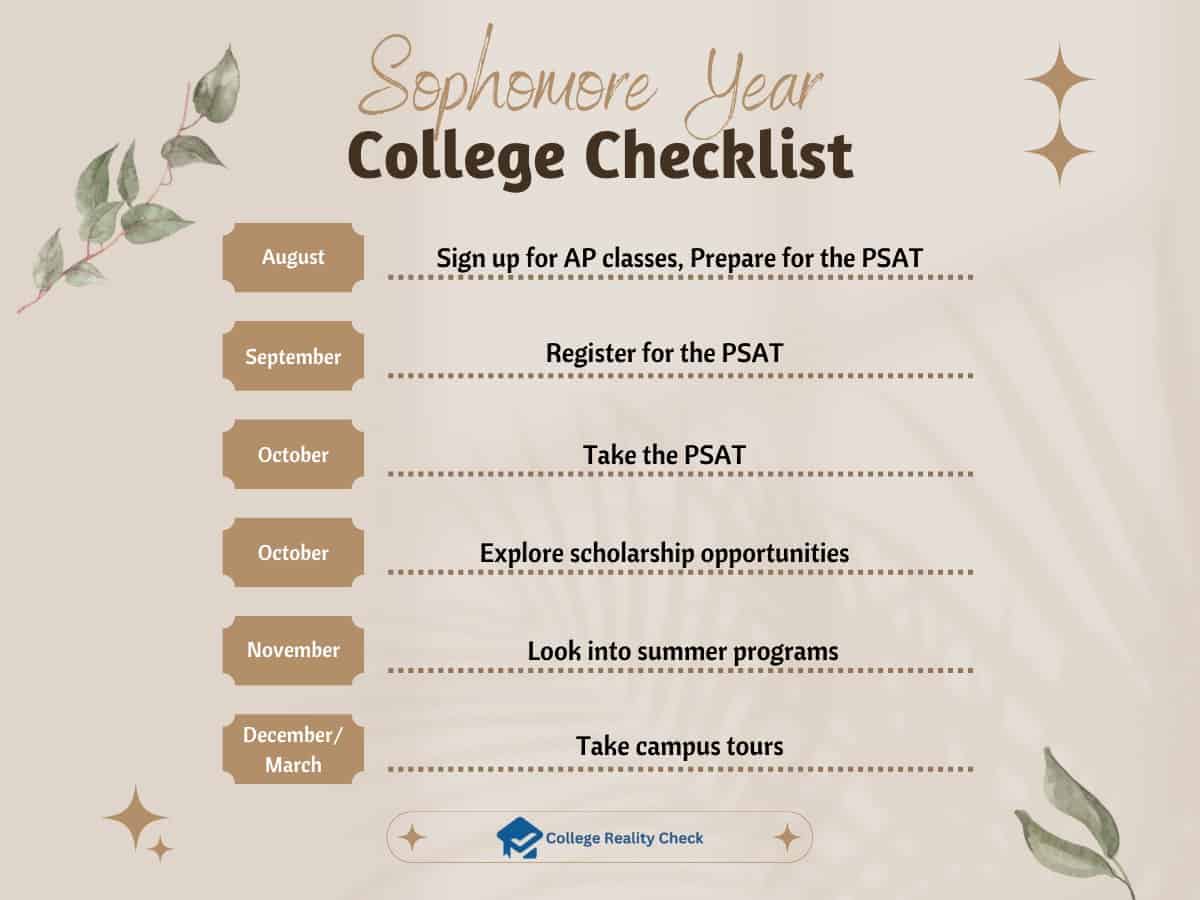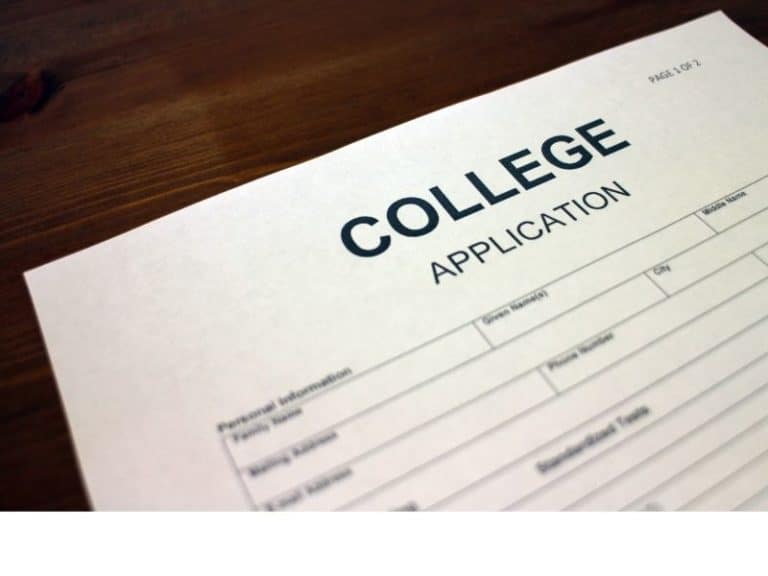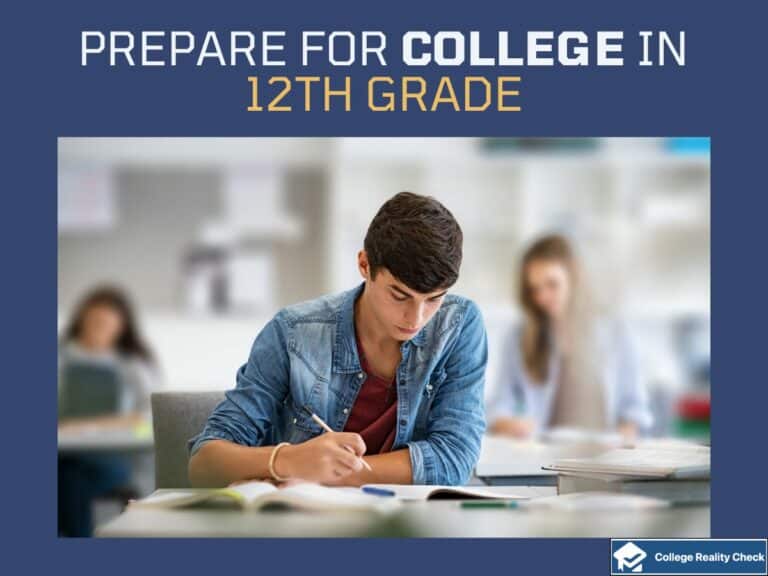How to Start Preparing for College as a 10th Grader: 9 Tips and Tricks
The 10th grade is three years away from college.
Yet, it doesn’t mean that sophomores planning on working on an undergraduate degree someday can take it easy.
If the goal is to get into a competitive university, it’s a great idea to start having summer jobs, joining clubs, picking challenging classes, and, most of all, getting good grades.
In this post, we will talk about the steps to take in your 2nd year of high school to prepare for college.
Start with the college prep checklist for sophomores below.

1. Keep Grades Up
Although the sophomore year of high school is 2 years away from the senior year of high school, college admissions officers will still check out the grades of applicants during the said time of their secondary school careers.
It’s because admissions officers appreciate students who have improved their grades.
Many freshmen teeners struggle with their grades as they transition from middle school to high school.
After a year, however, being accustomed to a new learning setup that involves a more challenging academic environment, unique extracurricular activities and different social dynamics gives them the opportunity to make up for their low freshman year grades.
2. Get Involved In Extracurriculars
10th graders who were unable to find the right clubs and organizations for them during their freshman year of high school should continue looking for those that align with their interests and passions.
Those who are lucky enough to have joined the perfect ones for them the year before, on the other hand, should keep on partaking in them meaningfully and purposefully not only for them to develop various skills but also to make their college application look more appealing, especially to the eyes of admissions officers at selective colleges with a holistic admissions policy.
3. Attend College Fairs
It’s during the fall when college representatives pay high schools and other venues a visit to spread word about their academic institutions, which is why the said time of the year is often referred to as the college fair season.
There are many perks that come with 10th graders attending college fairs, including the following:
- Getting answers straight from the mouths of people who know colleges
- Learning about colleges high schoolers may have never heard of
- Demonstrating one’s interest, which many colleges consider in the admissions process
- Saving money on expensive college campus tours
4. Sign Up for AP Classes
Many high schools do not offer AP classes to freshmen students, which is why it’s not uncommon for teens to start taking AP classes in the 10th grade, where most start with 1 to 3 less-demanding ones.
It is said that students who are aiming for admission to some of the most selective colleges and universities in the US should aim for 10 to 14 AP classes throughout their high school careers.
But since it’s not realistic for some teens, it’s fine to take 7 to 8 AP classes and also excel in extracurriculars to become well-rounded students and to have a competitive application.
5. Meet With the Counselor
High school counselors are trained to help students with all kinds of academic, personal and behavioral issues.
Teenage kids who would like to become bachelor’s degree holders someday may also count on their counselors for their college application needs — the roles they play can be crucial as they can help with anything from the selection of classes to take and activities to partake in high school to the submission of various documents during the college application process.
It’s during the start of the 10th grade when it’s best for sophomores to introduce themselves to their high school counselors, meeting with them at least once per semester until they graduate.
6. Prepare for, Register and Take the PSAT
Around 3.5 million sophomore and senior high schoolers in the US take the PSAT per year.
While it’s administered in October, teens who would like to sit for the exam in the 10th grade should start gearing up for it 2 to 3 months in advance — starting in the summer before the 2nd year of high school is definitely better.
Taking the PSAT helps high school students to fare better on the SAT. After all, the “P” in PSAT stands for “preliminary”.
In addition, the PSAT is also the National Merit Scholarship Qualifying Test (NMSQT). As the name suggests, the NMSQT serves as the official route toward the National Merit Scholarship Program.
However, to be eligible, there are 2 things 10th graders should keep in mind, and they are:
- They will have to outscore 99% of all PSAT test-takers
- They will have to take the PSAT again the following year — or they can choose to take it in the 11th grade
Registering for the PSAT
Most 10th grade teens who would like to sit for the PSAT will have to register at their high schools.
Since not all high schools in the US administer the said standardized exam, students who are attending institutions that do not offer it will have to look for those that do administer it, with the help of the school search tool by the College Board itself, which is a co-sponsor of the PSAT/NMSQT together with the National Merit Scholarship Corporation.
Taking the PSAT
The PSAT may be shorter than the SAT — 2 hours and 45 minutes vs. 3 hours and 15 minutes, both with breaks.
Still, it allows 10th graders to have an idea of what it’s like to sit for the real thing, thus making it possible for them to come up with the best test-taking strategies as well as determine their strengths and weaknesses.
Due to this, teens may start taking the PSAT in the 10th grade, although most would much rather take it in the junior year of high school to also qualify for the National Merit Scholarship Program.
7. Explore Scholarship Opportunities
Every year, more than $6 billion in scholarships are awarded to college students.
It’s not too early for high schoolers, especially those from low-income backgrounds and who are having doubts about their ability to pay for college, to start looking into scholarship opportunities.
The arrival of October — soon to be December — signals the FAFSA season for it’s when the FAFSA form becomes available.
Although it’s too early for 10th graders to fill out the FAFSA, they may still download it to have an idea of what it looks like as well as what details students and parents should provide.
Similarly, sophomore high schoolers may start checking out various scholarships available out there.
8. Look Into Summer Programs
As college gets closer and closer, summers between school years become more and more important. This is especially true when it comes to applying to your top-choice school as admissions officers would love to know how you spend your summers.
While November is too far away from the summer break, it’s usually the month when most summer programs open their doors to applicants, usually with deadlines in January or February.
So, in other words, you will have to move fast if you want nothing but the most meaningful and productive summer that selective colleges will be impressed with.
9. Take Campus Tours
It’s during the winter break and summer break when college tours won’t get in the way of your coursework.
After the 10th grade, teens tend to get busier and busier — skimping on touring college campuses in the junior and senior years of high school because having tight schedules can keep college-bound kids from finding the best-fit schools. And that is why the sophomore year provides the opportunity for them to visit some of those on their list.
Because a single campus tour can cost $2,000 at least, 10th graders may consider heading to nearby in-state schools or taking virtual tours, which may not be perfect replacements for in-person campus visits but will make do, nonetheless.
Getting Ready for College as a Sophomore Student: Conclusion
The 10th grade may be closer to middle school than college.
However, teens who are looking to receive acceptance letters from some of the most competitive institutions of higher education during their senior year of high school, which is when the college application journey culminates, should start taking the necessary steps to make that happen.
Can you apply to college in 10th grade?
When reviewing applications, college admissions officers do not generally consider what grade applicants are in. What they care about, instead, is the strength of the application, which can be challenging for sophomore students to achieve since they haven’t spent enough time in high school to attain enough competitiveness.
Can a 10th grade student have a job?
Many colleges consider work experience in the admissions process. In the US, high school students in their sophomore year are usually aged 15 to 16. According to federal laws, teens below 16 years of age cannot work past 7 pm. Also, they are limited to 8 hours per day, 50 hours per week and 6 days per week when school is out.
Read Next: How to Prepare for College in 11th Grade
Disclaimer: The views and opinions expressed in this article are those of the authors and do not necessarily represent those of the College Reality Check.






